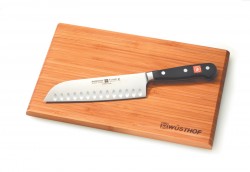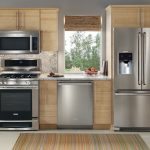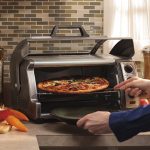
Higher end knives are made from a better grade of steel which is much tougher than your ordinary run of the mill kitchen knives.
Good knives can run to a few hundred dollars and so you should take great care to look after your investment.
Higher end knives are made from a better grade of steel which is much tougher than your ordinary run of the mill kitchen knives (the Wusthof Classic range of knives is a good example of a higher end knife set).
However, these knives can still be easily damaged and what follows are a few tips to keep them in great shape.
Do not over sharpen your knives. Sharpening is a destructive process and material is removed from the blade each time. A good knife should only need to be sharpened a couple of times a year, or less.
Hone your knife every time you use it. Unlike sharpening honing does not remove any of the blade material. Some people are confused between sharpening and honing, so let’s explain.
Sharpening resets the edge of the blade by removing some of it. So the end result is a nicely set sharp edge, with a set angle.
Over time when the knife comes into contact with a hard surface this edge can get bent under, or rolled over. So the knife will then appear blunt.
Honing is the process of realigning that edge so it’s straight again. You can use a honing steel for this. You know the type of thing that you’ve seen chefs or butchers use. A long rod that they run the knife over very quickly back and forth. That is honing the knife and not sharpening it.
The Chefs Choice M130 sharpener is an electric sharpener that can take a knife from blunt to razor sharp in 30 seconds. It has three stages to ensure a top class edge is achieved. Sharpening, honing and stropping stages. Overall well worth the money, especially if you have a number of knives to take care of.
Because hard surfaces will turn the edge over always use a softer material for your chopping board. Plastic or wood is a good choice. Do not use glass or metal.
Even though most knives are dish washer safe, do not put then in there. When the dishwasher is running things get bumped about, WIth a fine edge that these knives can hold even a small contact with another object can take a nick out of it. You may have to have it reground to get that out – disaster.
Wash all knives immediately after use with warm soapy water, rinse, dry and put away.
Put them into a knife block, a chef’s material knive wrap or even magentic strips that can be attached to a kitchen wall.
Top tip 1 – put the knife into the block with the sharp edge uppermost that will result in lesser contact onto the edge.
Top tip 2 – When using a magnetic strip always put your knives on with the handle on top and the blade facing down. This is for safety. If you grab a knife and it slips, a knee jerk reaction will be to try and catch it. With the blade facing up you’re likely to grab hold of that blade. Now that could be nasty.
Take care of your knives and they’re going to last you a lifetime, even with regular use.
















